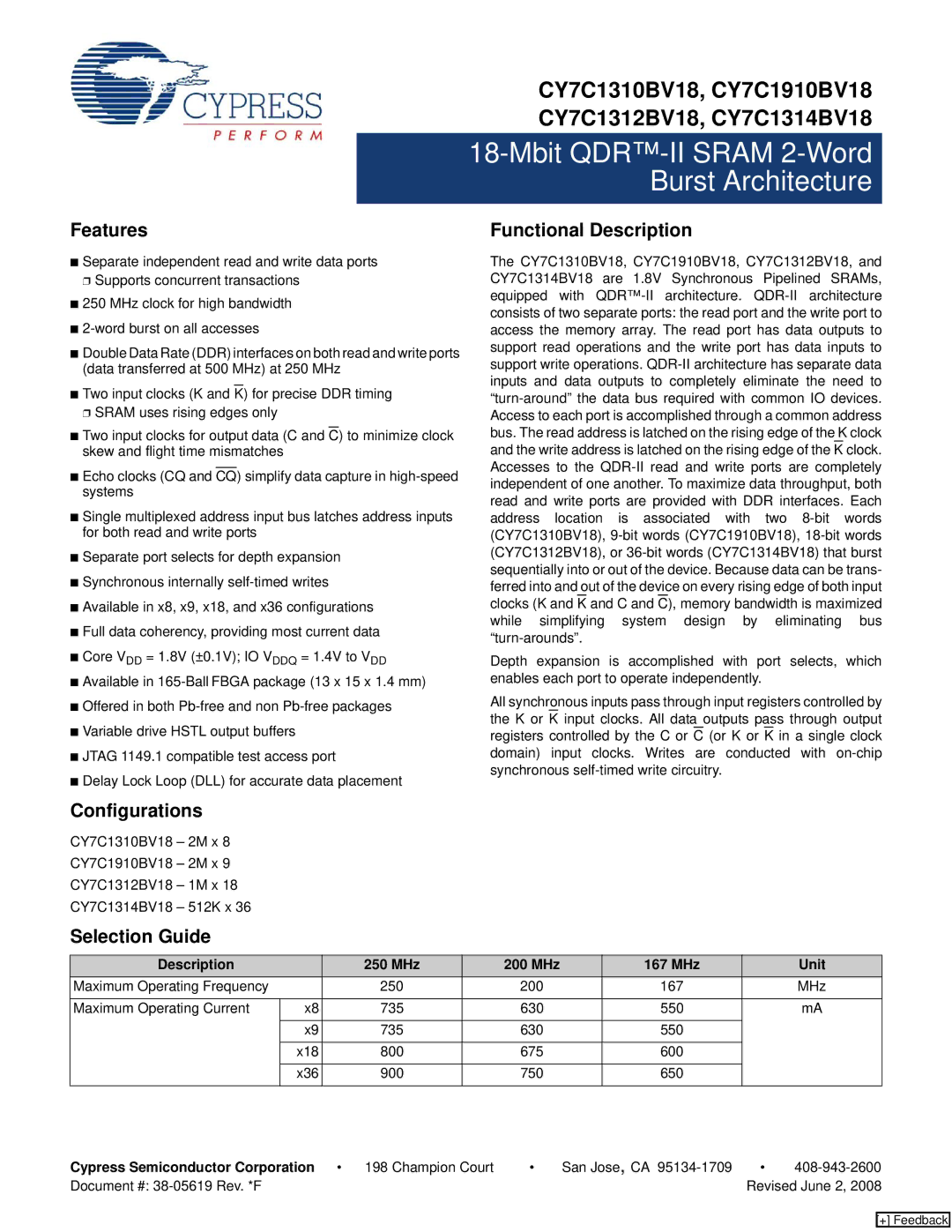
CY7C1310BV18, CY7C1910BV18 CY7C1312BV18, CY7C1314BV18
18-Mbit QDR™-II SRAM 2-Word Burst Architecture
Features
■Separate independent read and write data ports
❐Supports concurrent transactions
■250 MHz clock for high bandwidth
■
■Double Data Rate (DDR) interfaces on both read and write ports (data transferred at 500 MHz) at 250 MHz
■Two input clocks (K and K) for precise DDR timing
❐SRAM uses rising edges only
■Two input clocks for output data (C and C) to minimize clock skew and flight time mismatches
■Echo clocks (CQ and CQ) simplify data capture in
■Single multiplexed address input bus latches address inputs for both read and write ports
■Separate port selects for depth expansion
■Synchronous internally
■Available in x8, x9, x18, and x36 configurations
■Full data coherency, providing most current data
■Core VDD = 1.8V (±0.1V); IO VDDQ = 1.4V to VDD
■Available in
■Offered in both
■Variable drive HSTL output buffers
■JTAG 1149.1 compatible test access port
■Delay Lock Loop (DLL) for accurate data placement
Functional Description
The CY7C1310BV18, CY7C1910BV18, CY7C1312BV18, and CY7C1314BV18 are 1.8V Synchronous Pipelined SRAMs, equipped with
Depth expansion is accomplished with port selects, which enables each port to operate independently.
All synchronous inputs pass through input registers controlled by the K or K input clocks. All data outputs pass through output registers controlled by the C or C (or K or K in a single clock domain) input clocks. Writes are conducted with
Configurations
CY7C1310BV18 – 2M x 8
CY7C1910BV18 – 2M x 9
CY7C1312BV18 – 1M x 18
CY7C1314BV18 – 512K x 36
Selection Guide
Description |
| 250 MHz | 200 MHz | 167 MHz | Unit |
Maximum Operating Frequency |
| 250 | 200 | 167 | MHz |
|
|
|
|
|
|
Maximum Operating Current | x8 | 735 | 630 | 550 | mA |
|
|
|
|
|
|
| x9 | 735 | 630 | 550 |
|
|
|
|
|
|
|
| x18 | 800 | 675 | 600 |
|
|
|
|
|
|
|
| x36 | 900 | 750 | 650 |
|
|
|
|
|
|
|
Cypress Semiconductor Corporation • 198 Champion Court | • | San Jose, CA | • | |
Document #: |
|
| Revised June 2, 2008 | |
[+] Feedback
